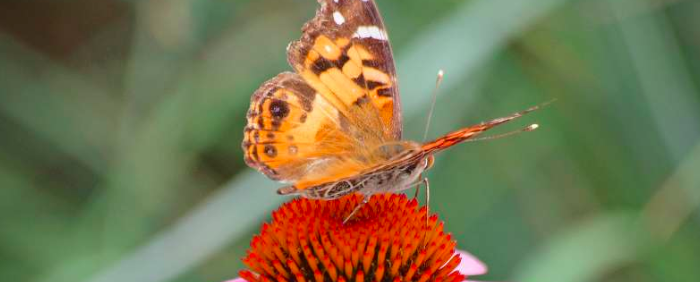
But if this dear Woody posed a lot of questions about the comparative interest of this or that sexual practice (and how, incidentally, to get there), the plants themselves, until proven otherwise, do not experience pleasure , and practice sex only to reproduce. And they have invented strategies that are sometimes very diverse, sometimes quite original (this will be the subject of the next article in this series), but which all have a meaning, a raison d’être .
Here is a new series of articles on plant breeding strategies . It will also be seen that plants succeed in ensuring their offspring, and sometimes effectively, without sex – without sexual reproduction. We will come back to it. Let’s start with what brought you here, is not it?
Sexual reproduction.
The sexuality of plants begins with pollination: it is the story of the small seed of the dad who meets the little seed of the mother . In humans, and in mammals in general, there are not 36 methods, but it is much more fun with plants.
Pollination self-pollinated or allogamous.
Already, some plants are called ” self-pollinated ” or ” allogamous “: in short, this means that some are able to fertilize themselves, by their own pollen, within the same flower pistil, while others have need another flower to greater or lesser proximity. For example, tomatoes, peas, lettuce are said to be self-pollinated : a single tomato plant will give you tomatoes, with seeds, even if there are no other tomato plants for miles: will even give seeds if it bears only one flower!
In some cases, plants of the same species are either entirely male or entirely female. This is the case in so-called ” dioecious ” species such as asparagus, spinach or hops – in others, a plant will carry male flowers and female flowers: this is the case of zucchini and Cucumbers !
In practice, 50% of angiosperms (flowering plants, if you will) are exclusive allogams (that is, they only use this mode), 20% are self-pollinated and 30% are self-pollinated “Mixed”.
And there, my 6 year old son (and you, perhaps?) Frowns, and asks: WHY ?
But why?
That’s true why? Why do plants have different modes of reproduction? Well, we can advance a hypothesis: the adopted mode corresponds to the strategy chosen by the plant, which is directly related to its environment. The purpose of the plant is ALWAYS to ensure her offspring, simply she chooses different ways to adapt to her environment.
Thus, a plant will “choose” self-pollination, for example, because pollinators are rare – on the premise that “it is better to be alone than poorly accompanied”. Or simply because it seeks to occupy the space , quickly, by multiplying the individuals. It is also a choice of facility: it is less risky , it requires less energy!
But this facility has a cost: strictly self-propagating reproduction does not allow a genetic mixing : there is a risk of erosion of diversity! Conversely, allogamous reproduction requires a higher investment , but promises greater genetic variability, thus a strong evolutionary potential to adapt to a changing environment.
And the environment changes : it is the hypothesis of the Red Queen, proposed by Leigh Van Valen, which can be summarized as follows: ” the permanent evolution of a species is necessary to maintain its capacity following the evolutions of the species with which she coevolves “. Clearly, if I do not evolve but the others evolve, I will disappear.
It is therefore necessary to adapt, even if it means remaining allogamous but multiplying its chances of reaching the goal!
A merciless fight to seduce … insects.
Plants have therefore developed ingenuity treasures to, in particular, attract pollinating insects. It is sometimes innocently believed that nature does things well by offering us flowers of pretty colors and shapes . We are surely mistaken, nature is a counterfeit of beauty . A plant that makes brightly colored flowers is just trying to catch the attention of pollinating insects.
And besides, if the need is not felt, no need to get tired ! The mountains of New Zealand, for example, are distinguished by a very large majority of species with white flowers. Why? This absence of floral pigments is related to the rarity in this region of pollinating insects attracted by colors. For example, butterflies, bees and bumblebees are rare, and pollination is mainly provided by diptera – flies – which are much more sensitive to odors.
Conversely, if the insects present are sensitive to colors, the plants will literally compete for creativity to wear the most flashy colors – often in the colors most likely to attract the species that interests him! And the color obviously is not enough: the size of a flower, but also their layout is not intended to brighten the eye of the gardener, but to attract the maximum of pollinators. The umbel flowers, if you look closely, it’s a real open-air restaurant for some insects! Does not this purple rudbeckia seem to proudly bury the breast it offers to its butterfly?
En quand ni la couleur ni la taille ne sont suffisantes, c’est l’odeur ! Certaines fleurs exotiques, comme le réputé Arum titan, sont réputées pour avoir une véritable odeur de cadavre : c’est tout simplement parce que les insectes qu’elles souhaitent attirer sont coprophages. Et s’ils sont loin, peu importe, Arum titan diffuse son parfum à plus de 800 mètres…
Mais parfois, cela va encore plus loin, et certaines plantes ont développé des stratégies bien plus complexes, comme de capturer les insectes pour les tartiner longuement de pollen avant de les relâcher ! Ce sera l’objet d’un prochain article. Stay tuned !